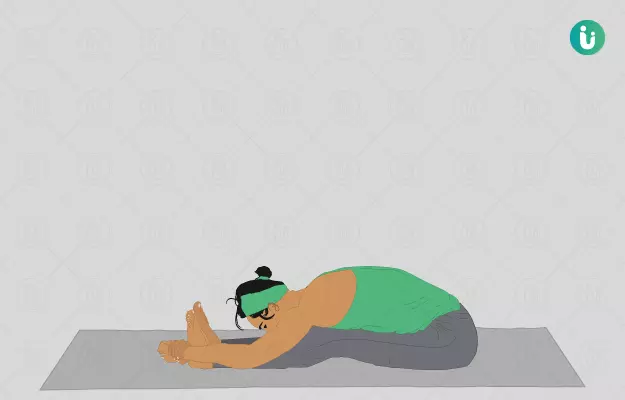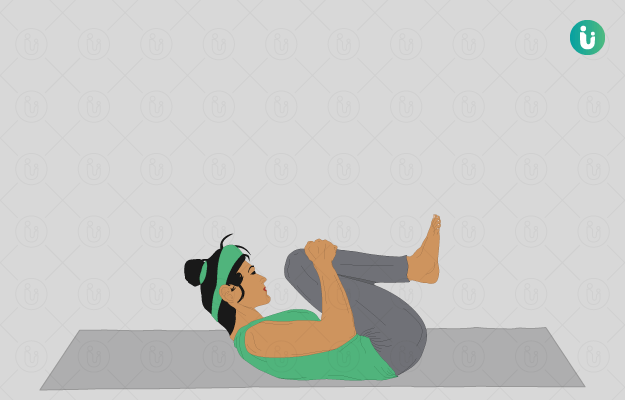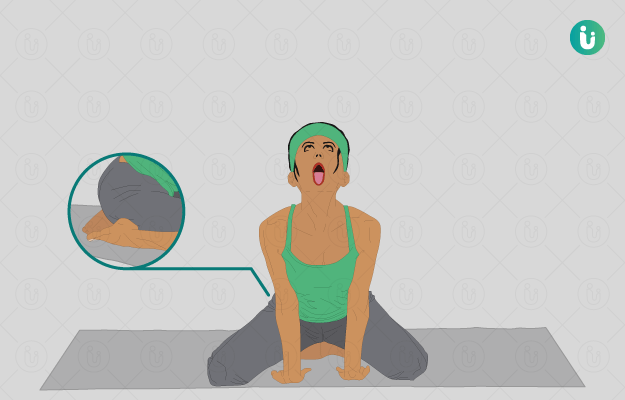"Through the practice of these limbs of yoga, impurity is overcome and wisdom and an enduring capacity to make distinctions are achieved." - Patanjali’s Yoga Sutra, 2:28
Paschimottanasana is one of the 12 basic poses of Hatha yoga and is also a part of Ashtanga yoga. In this seated pose, the upper body is bent forward and over the legs. Known as the Seated Forward Bend pose in English, this asana’s name derives from three Sanskrit words: paschima, meaning back or west; uttana, meaning intense stretch; and asana, meaning pose.
While this pose can be challenging for beginners, it is known to have a soothing effect and can be used therapeutically to treat anxiety and depression. It also works well to loosen up the hamstrings considerably over time. Here’s everything you need to know about Paschimottanasana (Seated Forward Bend Pose).
- Steps: correct way to do Paschimottanasana or Seated Forward Bend Pose
- Benefits of Paschimottanasana (Seated Forward Bend Pose)
- Who should not do Paschimottanasana (Seated Forward Bend Pose)
Steps: correct way to do Paschimottanasana or Seated Forward Bend Pose
To do Paschimottanasana correctly, you need to follow these steps carefully:
- Sit on the floor with your legs stretched out in the front, feet together. Your back should be straight - perpendicular to the floor. Breathe in as you place your hands on your knees.
- Relax your body. As you breathe out, slowly bend forward from the hips while also sliding your hands along the legs towards the feet.
- If you can, hold the big toes with your fingers and thumbs. If this is not possible, hold your heels, ankles or any part of the legs below the knees that you can reach comfortably.
- Hold this position and breathe while relaxing your back and leg muscles to stretch them gently.
- Breathe in, breathe out. Bend your elbows and try to gently move your trunk closer to the legs. Make sure your legs are straight. Don’t use the back muscles for this step: don't round your back.
- If you can, touch your forehead to your knees without bending the legs. Do not strain if this is not possible, as this will improve with practice.
- Hold this position for as long as comfortable, or up to 30 seconds. Remember to breathe normally throughout.
- Exhale, relax and gently move back to the starting position.
Modifications of Paschimottanasana (Seated Forward Bend Pose)
Paschimottanasana can also be started by inhaling and raising the arms and then bending forward.
This helps to get a nice stretch on the back, abs and side waist before bending forward into the pose. It may also help some practitioners to:
- Check that they are sitting properly on their "sitting bones".
- Achieve a deeper stretch.
- Keep their back straight.
- Start the pose with greater focus and peace of mind by taking a deep breath in as they raise their arms.
However, this is a matter of convenience more than anything else. Please see your comfort and practise this pose in a way that suits your skill level.
Benefits of Paschimottanasana (Seated Forward Bend Pose)
The following are the benefits of Paschimottanasana:
- Stretches the hamstring muscles
- Increases flexibility in the hip joints
- Tones and massages the entire abdominal and pelvic region
- Helps with weight loss from the active areas
- Stimulates blood circulation to the spine
- Calms the mind and helps relieve symptoms of anxiety and mild depression
- Improves digestion
- Relieves symptoms of menstruation (example, period pain) and menopause
- Reduces fatigue and anxiety-induced headaches
- Can help treat and prevent high blood pressure, infertility, insomnia and sinusitis
Who should not do Paschimottanasana (Seated Forward Bend Pose)
Paschimottanasana is beneficial, but you should not try this pose if you have the following issues:
- Do not try this asana if you have slipped disc, sciatica or hernia.
- If you have a back injury, this asana should be avoided or done only under the supervision of a master.
- Do not practise Paschimottanasana if you have asthma or diarrhoea.
- Pregnant women should not do this asana. They can, however, do the standing variation of this asana with the support of a chair.












